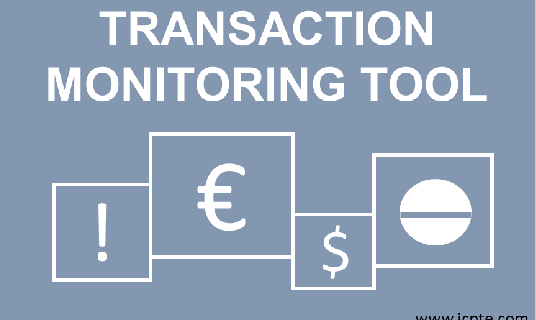Which are the main elements of a transaction monitoring tool?

The Institute of Continuous Professional Training and Education (ICPTE) offers an extensive variety of Pre-Recorded and Live Online Courses created by Professional and qualified Instructors with years of experience in their field.
ICPTE platform allows You the flexibility to watch online pre-recorded seminars at Your own convenience, at Your own pace, in Your own time and place. Start watching a seminar today and complete it at Your own time. You can have access from anywhere. We work with professional and qualified instructors with years of experience in their field.
One of the more popular AML seminars is the “Transaction Monitoring – AML Transaction monitoring rules“.
Which are the main elements of a transaction monitoring tool?
An effective transaction monitoring tool must enable a regulated firm to:
- Receive alerts when identifying suspicious/unusual transactions
- Receive alerts when identifying suspicious behaviours or patterns
- Receive alerts when identifying specific threats or typologies
- Customize and configure multiple rules, actions, scenarios and threshold
- Provide a risk rating for monitored transactions, patterns, threats and scenarios
- Organizes the workflow based on the risk levels of the alerts
- Monitor transactions on real-time
- Put on hold the transaction, once an alert has been triggered, pending further investigation by compliance or risk personnel
- Forward alerts to the compliance departments or to any other department/employee (i.e. risk department)
- Provide detailed analysis about the alert
- Reduce the number of false positives with the use of Artificial Intelligence (AI) or Machine Learning without compromising regulatory obligations.
Is Manual, Human intervention necessary?
An effective transaction monitoring system may employ an automated approach, but will still rely on a certain level of manual, human intervention, to:
- document the scope of transaction monitoring, including screening of any additional information (such as IP addresses)
- calibrate the systems and rules – however some ‘off the shelf’ solutions may lack flexibility or will involve significant time and resource to be adapted to respond to emerging risks (such as the pandemic)
- review the potential issues identified – these could be relating to a range of financial crime issues, from money laundering or fraud to sanctions evasion
- assist financial institutions to comply with legal and regulatory requirements, including reporting of suspicious activities and transactions
- comply with data privacy requirements, prevent data breaches and protect against cyberattacks
- provide reporting to senior management and regulators, and
- undertake assurance activities, proportionate to the scale and complexity.
AML transaction monitoring best practices
When it comes to the process of monitoring transactions, the legislation is not prescriptive. This means individual financial institutions can choose an approach that suits them.
Although some small financial firms choose to use a manual approach where employees check transactions, this can be incredibly resource intensive. It may also mean your business is unable to adapt to emerging risks or changes in the regulatory landscape. As a result, many firms instead choose to adopt an automated approach. Although automated tools can be expensive, they are noticeably less resource intensive and are highly accurate.
However, many effective transaction monitoring approaches that employ an automated approach do still rely on some level of human intervention. This ensures that:
- The scope of transaction monitoring is monitored
- The systems and the rules in operation are monitored and updated
- The potential issues identified are reviewed regularly
- Assurance activities that are proportionate to the scale and complexity of the organization are undertaken regularly
As a result, each firm must identify and document the correct transaction monitoring approach for its business.
Although the right approach for you will depend on transaction volumes, time pressures, and regulatory requirements, it’s important to note that culture, education, and training are all keys to preventing financial crime.
Read more articles on Transaction Monitoring
Module 1: What is AML transaction monitoring?
Module 2: Transaction Monitoring – AML/CFT controls
Module 3: AML transaction monitoring process – STEPS to create a transaction monitoring system
Source: Institute of Continuous Professional Training and Education (ICPTE)




























